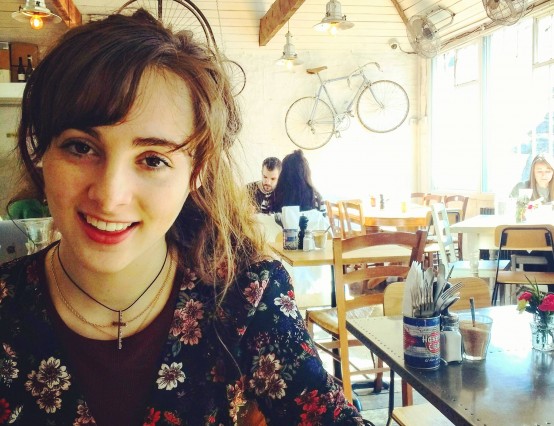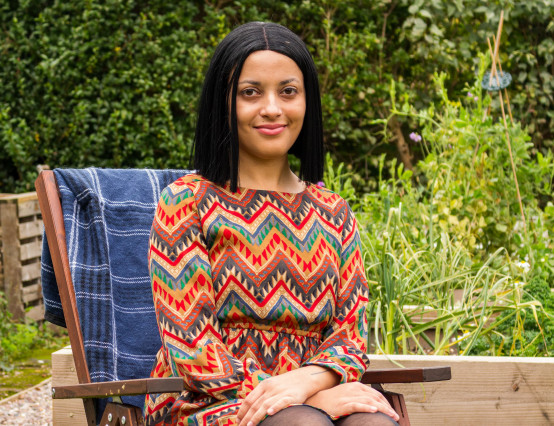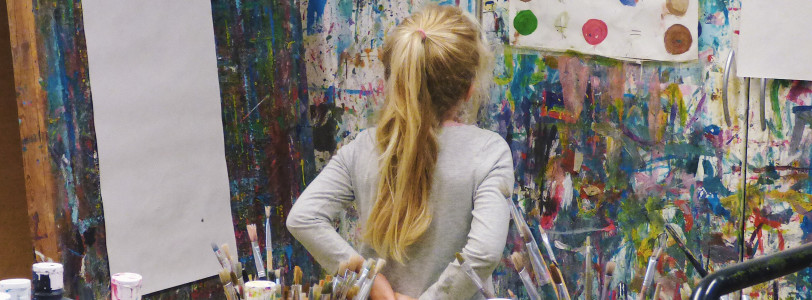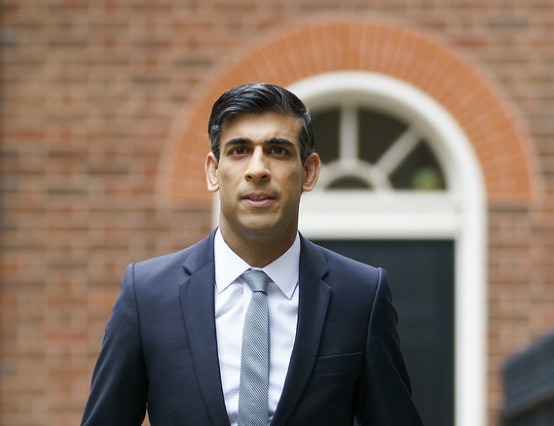Why does a piece of art being a classic trump the need for said art to be relatable and inspiring for those forced to consume it? The current curriculum includes young people learning about traditional artists such as Vincent Van Gogh, William Blake, and the like. These artists have featured on curriculums for decades, despite how much the arts have evolved. As someone currently still being taught under this curriculum, we are learning through painting, sculpturing and pencil drawing. I have never been particularly interested in the art I have learned at school as there are too many limitations of the medium. Pencil marks will only blend so far and charcoal can only be so dark.
Modern art on the other hand and its inclusion of technology has allowed for the evolution of artistic expression, whether that be through interactive screens, projectors, videos, or new, creative and innovative ways of presenting. The development of technology has allowed for progressive artistic concepts and has changed the way art is created and shared. The only problem is, we don’t learn about any of these artists in school. Thanks to technology and social media, anyone interested has a place to go to look and find art that is more relatable and inspiring – but that wasn’t always the case and it shouldn’t have to be that way.
I conducted a poll for teachers and students aged 14-19. 70.2% of students want to see more digital arts taught in their classes, whilst 30.8% are happy to carry on learning about traditional arts but wouldn’t be opposed to the idea of exploring what’s considered more modern art. Of the teachers I spoke to, 75% want to teach digital arts, whereas 25% would like to remain teaching traditional arts.
The current situation of teaching classical and traditional arts in education portrays a picture that is unrelatable and shapes a perspective of youth culture and the future of arts that is not diverse, modern, or innovative. This needs to change. Institutions need to shift their focus to working in tandem with youth culture as it stands today.
One of the ways the education system could do so is by championing more diverse voices when it comes to the teaching of art and other creative subjects. As a brown Muslim, I know how significant it is to be accepted for who you are. As someone who has always found it difficult to relate to what is perceived as traditional art – paintings by Van Gogh, literature by Chaucer and Shakespeare – the evolution of modern art in society has been a great way for me as a young person to appreciate and participate in artistic expression outside of what is considered the norm, or tradition.
 Sienna JamesI spoke to Sienna James, who studies a BA in History at the University of Cambridge, alongside completing the Gold Arts Award in Creative Writing.
Sienna JamesI spoke to Sienna James, who studies a BA in History at the University of Cambridge, alongside completing the Gold Arts Award in Creative Writing.
“There is space for development of modern and digital arts, but traditional arts have to improve first.”
Sienna goes on to say,
“Digital arts should definitely have a place in schools, but I don’t see this happening until traditional arts develop.”
Despite this, she agrees that digital arts should be implemented into the curriculum, as it’s “real and tangible.” Digital arts allows students to apply their learning to their life.
Sienna says:
“Yes, digital arts should be implemented in the curriculum but shouldn’t completely replace traditional arts.”
Sienna has a point. Digital arts may be accessible for those who struggle to draw or write, but financially it can be inaccessible for many. This includes schools and young people whose parents/carers cannot afford an iPad for example. The cost of living has a profound impact on the use and development of digital arts.
Digital art comes with its caveats, however there are many positives. Digital arts can be done by oneself, it can be done for those who struggle to write or speak, for those who struggle to express how they are feeling. Digital arts are extremely accessible, whereas some galleries and theatres are not accessible for those with needs or disabilities. Even the fact that many theatres can’t make adaptations due to being grade listed buildings. Even those who live in rural areas and do not have galleries and art institutions nearby are able to bridge that gap with digital arts, simply because of access.
I conducted an interview with digital artist Rosa Francesca. Her portfolio includes the facial recognition escape game ‘Gallery of You’, and Cinematica, which used an ECG monitor in conjunction with an XY pen plotter to create visual art. Rosa Francesca is a digital artist whose work focuses on creating experiences for people of all abilities using biofeedback and facial recognition technology.
 Rosa FrancescaAs a modern artist, what is your view on traditional artists and the place they continue to hold in society today?
Rosa FrancescaAs a modern artist, what is your view on traditional artists and the place they continue to hold in society today?
I find that I don’t connect as well with paintings and sketches as I do to installations and digital works. There are some exceptions; I’m a big fan of Edward Hopper, and artists local to the Midlands such as Lorraine Sadler and Anneka Reay, but in general I don’t tend to feel any particular way looking at older paintings and still life images. The most visceral art I’ve experienced has been installations and performance art.
Do you think the kind of traditional art taught in the curriculum is relatable to young people?
When I was at secondary school (in the mid-2000s) I wasn’t particularly interested in any of the art we studied. I vaguely remember learning about Frida Kahlo and Matisse and the rest is just a blur. Most of the mediums we used were paint or charcoal/pencil, and although I was proficient at these, I was very slow so I just thought that art wasn’t for me. It was only in adulthood that I got into art, because I realised that digital art was actually really exciting and fit my style a lot better.
Do you think there are enough diverse voices being taught in education today? What was your experience like in school relating to this?
We mostly learned about older white male artists when I was at school, and even when we were allowed to do projects based on our own choice of artists, I didn’t have much knowledge of diverse artists so the only artists I was really aware of were still largely white and male.
How important do you think it is to have art, literature and the like by diverse voices taught in schools?
I think it’s so, so important to have a wide representation of different races and genders taught in the arts. Even when I was studying Music at university, we were learning about white musicians and studying musicals that had all white casts, despite there being plenty of musicals that prominently feature Black people. It’s important for young people to see people like them in the arts, so they can see a way forward for themselves. It was always disheartening as a child to never see people who looked like me represented in the media. I went to a school that was very white so it was hard to speak up about this topic, and I think a lot of young people of colour probably experience the same, and think that if they bring up the subject of representation in the arts to their teachers that they might not be listened to. I think discussing race and diversity needs to be normalised.
As a digital artist, who were your inspirations? Did you ever struggle to see a path for your kind of art because of how much society and educational institutions rely on more traditional art?
As a kid I was really interested in animation, particularly in video games and music videos, and I think that has definitely informed my current art practice. I knew a lot of traditional art, but wasn't necessarily inspired by it. As an adult, I’m inspired by a lot of local contemporary artists and love going to exhibitions in Digbeth, Birmingham as there’s always something wild going on there.
At school I wasn’t even aware of the digital art scene, so I never expected I would go into a career like this. I wish contemporary art, digital art and performance art were covered in the school curriculum more. If I’d learned about this stuff sooner, then I would have gotten into this career years and years ago, but I only discovered it by chance as an adult through friends in the art scene. I didn’t take art at GCSE despite being encouraged to by teachers, because I knew I wouldn’t be passionate about the coursework. Having a formal education in art isn’t essential, of course, but it could have given me a better start in my career if I had learned about this stuff early on. I think it would benefit young girls in particular to learn about the intersection of STEM and the arts, and that there is a place for them in these fields.
Does social media play a part in you finding other like minded artists?
I use social media to find artists all the time! I’ve found some of my favourite artists this way, and I love how easy it is to reach out and contact artists that I admire so much. It’s also a good way to support other independent artists.
What do you think the future of youth arts and culture looks like?
The future definitely seems bright, and I see a lot of outreach programs that aim to introduce young people from diverse backgrounds (such as neurodiverse, people of colour, and girls) to contemporary arts and STEM subjects, which seems like a great start. I think we probably still have a ways to go, but artists are trying really hard to show kids that there is a future for them in the arts and that they don’t have to go through the traditional pathway.
In 2018, a data survey was conducted in England on the ethnicity of people aged 16 and above who have taken part in art. The total number of respondents was 8,161: 7,239 people were white, 487 were Asian, 226 were Black, and the rest were either mixed or other. In the USA, statistics show there are over 11,790 artists employed, 73.6% are white, 11.4% are Latino, 7.5% are Asian, and 3.9% are either Black or African American.
We are in the 21st century and it’s time the world of arts and culture is seen as a world that is diverse and has voices from everyone, no matter their background, culture, race, ethnicity or abilities.
The education system is constantly cutting funds to subjects that express difference and champion creative pathways. In July 2021, the former Secretary of State for Education, Gavin Williamson, announced a 50% reduction in funding for creative subjects, such as: art and design, performing arts, music, drama, dance, and media studies. The former Secretary of State for Education said the money “will be directed to STEM subjects.” In December 2022, Creative Scotland announced the Scottish government had decreased their funding by 10%, roughly £7M. Scotland and Northern Ireland Regional Organiser Caroline Sewell said:
“The budget announcement is hugely concerning to the culture sector as a whole. Years of standstill funding compounded by the cost of living crisis and interest rates as they currently are spell a bleak outlook for an already vulnerable sector.”
Digital art has enabled artists to break ground and move away from more traditional, classical arts that can be isolating and unrelatable, especially to the younger generations who grew up with the advancement of technology. However the move to digital art is contending with forces who don’t see the value in art and the place it holds for young people. Until policy makers see the importance of art, teachers who want to expand the curriculum and young people interested in alternatives to tradition, will have to take it upon themselves to find their place and fuel their interest in the art world, outside of the confines of the classroom.







0 Comments